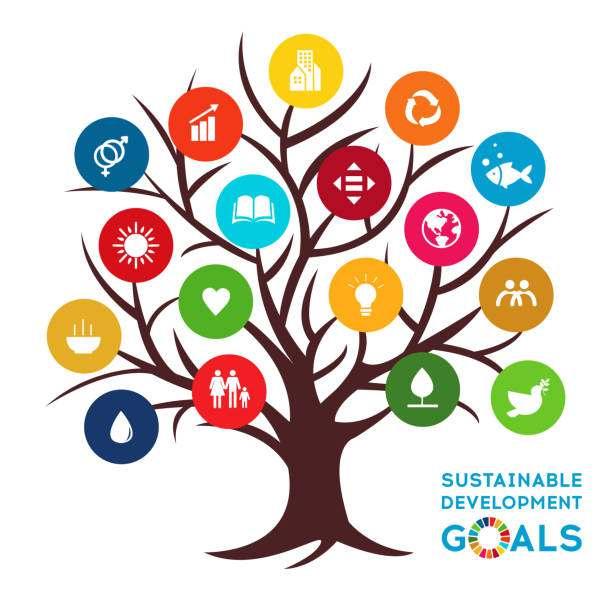
9 minute read
Understanding Hygiene Behavior & Behavior Change: Hand washing and Food Hygiene Perspective
from You-wA-H
by schoolindia
Webinar 12
Understanding Hygiene Behavior & Behavior Change: Hand washing and Food Hygiene Perspective
Advertisement
Coronavirus disease (COVID-19) pandemic has made proper hand hygiene mainstreamed, if not ingrained, into public consciousness. Access to and sustainability of water, sanitation, and hygiene (WASH) services is vital to protect human health. Promoting Hygiene Behaviour will be particularly a challenge amongst children who live in their own frills and fancies. Exploring modern approaches and innovative interventions for hygiene would require greater Convergence between schools, implementation agencies, public health experts and change makers.
A platform was created to discuss best practices for hygiene behaviour change and inferring the limitations of schools in regards to Hand washing and Food Hygiene with our esteemed panelists, which included:
DR. VIJAY PAL SINGH Joint Director(SBCD) at Food Safety & Standard Authority of India(FSSAI), Govt of India DR. MANISHA SHARMA -
DR. APARAJITA SUMAN KM & Communication Specialist in Swachh Bharat Mission(SBM) at Ministry of Jal Shakti Principal, Venkateshwar International School, Dwarka
MR. RAVI BHATNAGAR Director, External Affairs & Partnership, Reckitt Benckiser
KEY TAKEAWAYS
SOME STATISTICS ON HAND AND FOOD HYGIENE BEHAVIORS • Children under five years of age have 40% more chance of developing health conditions due to poor dietary habits or unsafe food. • With the rise in childhood obesity, children have been put at a higher risk of developing lifestyle diseases. Seven factors out of 10 of an illness are related to food.

GOVERNMENT INITIATIVES TOWARDS HYGIENE • In order to raise awareness and reduce adulteration, the FSSAI has launched a Magic
Box for school children, which helps in conducting tests providing information on the amount of adulteration in the food items. • FSSAI tries to reduce toxic residues in food items. • FSSAI has launched a guide book for us to understand what we should consume during this pandemic; it is called “Eat Right During COVID”. • Eat Right School Program creates awareness around food safety and nutrition and hygiene among school children and the community at large. Additionally health and wellness ambassadors have also been appointed; they ensure good health and wellbeing of community members. • Food Safety and Standards Regulation 2019 has been issued by FSSAI; providing that unhealthy food that is high in salt fat and sugar should not be sold in and around the school premises. • FSSAI has a program called “Eat Right Campuses”. Under this program campuses and mess register themselves, their hygiene conditions are checked, training sessions are given to certify them as Eat Right Campus. • In rural India, finance is one of the key challenges in implementation of a program. A special provision has been made under the finance commissions where in 15% of the budget has been allocated to water and sanitation activities. Panchayats have been involved to make use of the provisions.

KEY TAKEAWAYS
CHILDREN AS CHANGE MAKERS • In rural India, children were appointed as “Swachhagrahi” , these children took responsibility for cleanliness around them. • In a village in Bihar, children started a campaign “Mujhe Shauchalya Chahiye Hai”, to promote the WASH behaviors. • Children initiated a Soap Bank System. Under this system, children started donating soaps on their birthdays to help maintain sanitation and hygiene among those households that could not afford purchasing soaps themselves.
ROLES OF SCHOOLS AND PARENTS • It is important that the teachers sensitize the students about the harmful effects of violent games on our mental health and how excessive screen time is unhealthy. • Toddlers tend to copy the actions of adults; this can be strategically used to teach toddlers. Adults could practice hygiene behaviors in front of the toddlers, which they will ultimately mirror and develop similar behaviour practices.
FOOD HYGIENE AND DIETARY HABITS • While we eat healthy and eat the right quantity, we must also ensure diversification in our diets. • Trans fat must be eliminated from our diets. • Consumption of fortified food is highly recommended along with locally and seasonally produced foods. • It is essential that we ensure that food is easily available in our surroundings and is hygienically stored.

ADDITIONAL POINTS TO BE CONSIDERED • Food advertisements also need to take care that they do not promote unhealthy food items among children. • This is not the last pandemic that we will be facing; we should not be complacent and follow the rulebook designed by WHO • While preparing campaigns one must ensure that the target audience/community is involved in all the activities. The community should not be looked at as a beneficiary, they should be treated as partners. • Several programs have been appreciated as behavioural change measures. India has motivated several neighboring countries to achieve the sustainable development goals and has simultaneously adopted various measures to achieve her goals as well.
SURVEY FINDINGS
Over 31% of the audience thinks there are more than 7 steps of handwashing, whereas 54% knows about 4-6 steps and over 14% think there are only 4 steps of handwashing. Close to 83% of the audience knew we must practice hand washing for a minimum of 20 seconds, 11% think 15 seconds is enough, while 6% believe only 10 seconds must be spent on washing hands. 95.5% believes that hygiene and immunity are closely related. 67.6% of the audience fewls that hand hygiene did not receive enough attention prior to COVID-19. More than 75% of the audience believes they possess adequate knowledge on food safety.

Webinar 13
Building Convergence for India’s School Health: Achieving Sustainable Development through Health promotion in Schools
Inculcating healthcare in school education is crucial to achieving Sustainable Development Goals 2030. Even at early childhood, the student begins to develop information related mental and emotional health. In a later stage, the student at adolescent gets equipped with sexual and reproductive health and rights, communicable and non-communicable diseases.
These students with better nutrition and health awareness will then go onto influence economic growth, livelihood, development, climate change, consumption patterns as leaders of tomorrow. SHARP NGO celebrated “United Nations Day 2020” by focusing on creating a platform to discuss role of the schools in motivating students to work towards achieving SDGs together. With convergence between schools, policy makers, civil societies, teachers and intervention agencies, this moderated discussion was carried by an eminent panel, which included:
MS. URVASHI PRASAD Public Policy Specialist, Niti Aayog

DR. SUDHIR MAKNIKAR MR. NIXON JOSEPH -
Director, Path India President, COO - SBI Foundation
DR. SHREEPORNA BHATACHARYA Program Officer (School Health and Wellness Centers Initiative) at USAID-NISHTHA(JHPIEGO) MS. ANJU MEHTA Principal - Angels Valley School, Rajpura
KEY TAKEAWAYS

About Sustainable development goals • Sustainable development goals are overlapping; if you try to achieve one goal, we witness collateral effects on other goals. • It’s not taking anyone, it’s taking everyone for achievement of SDGs. The interdependence between countries can be witnessed in the agreement to achieve all the SDGs together. • SDGs help in educating students about the cultural, economic, political and environmental issues. The students are the torch bearers who can take forward the fight of raising awareness and reducing cultural disparities.

CHALLENGES TO ACHIEVING SDGS • The major challenge as opposed to the common view isn’t the funds, it is the knowhow. • Capacity building is also a challenge • The next problem is data management, it is not systematically maintained and action is not taken upon the recorded data.
ADOLESCENT WELLBEING AS AN IMPORTANT PARAMETER FOR SDGS • Healthy children are the foundation of the nation; their developmental status decides the future of the nation. • Dietary deficiency caused by intake of junk foods should be talked about with the
KEY TAKEAWAYS
children. Unhealthy dietary habits impact the mental and physical health of the students. Immunity boosters are not recommended for children even if they have been infected with a disease. A balanced diet and adequate physical activities go a long way to develop a child.
SCHOOL HEALTH PROGRAM AND GOVERNMENT INTERVENTIONS • Under the school health program, the government aims to reach out to around 2 crore students and holistically develop and equip them with life skills through 11 distinct schemes. • The school health program has several aspects to make adolescents aware of the critical health issues, physical and mental wellbeing and WASH. • New innovation and intervention can increase the number of students, especially girls, in schools ensuring quality education for all. A shift in the approach towards school education from input to output based interventions has resulted in significant difference in the quality of education. • The national education policy is a promissory note, it promises to deliver a system that will lead to the sustainable development of the country. Future development will lead to a shift of unskilled work to machines and increase the demand for skilled laborers.
Therefore, we need bridge the gap between education and technology.

ROLE OF SCHOOLS IN ACHIEVING SDGS • There is a need to reimagine schools as a means to achieve SDGs. 60-70 percent activities can be conveniently conducted in schools to achieve SDGs. • The midday meal scheme at the school is an approach to fight hunger through schools. • Health promotion activities can be conducted in schools to promote WASH and helps preventing diseases. • Schools should fight issues relating the menstruation taboos, sexual violence and health risks of early marriages in rural India. • Simple and innovative activities like nukar-natak and cooking competitions can be ways to teach students about good diets. • Schools can build and promote age appropriate activities that engage students towards achievement of SDGs 2030. • Health is a greater priority and therefore schools must not reopen, especially for students with underlying health conditions.
KEY TAKEAWAYS
ROLE OF CSRS AND OTHER IMPLEMENTING AGENCIES • There are several developmental challenges that we face, Public private partnerships and CSR has become mandatory to support the developmental activities. • Through activities or sessions with parents and students we can also address genderbased issues and promote mental well-being. • An important message that needs to be taught is that well-being is more important than curative health. • Adequate and appropriate infrastructure is needed to ensure better health and education for women and children with special needs.

SURVEY FINDINGS
88% of the population thinks the concept of health education has transformed in India in the last 5 years. Over 92% of the audience opines that Sustainable Development Goals are important for schools. 38.4% of the participants feel there is appropriate health-based information available in schools for students & parents while 24.9% is unsure. Out of these, 78% people feel there has been a positive change. 87% of the participants believe students can contribute to Sustainability in the future. 85.4% people have moderate to high knowledge about the Sustainable Development Goals.



